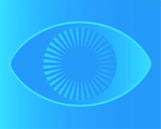Is laser correction safe?
Can you explain the difference between nearsighted and astigmatism?
Yes. To date, more than a million people have had the procedure performed with overwhelmingly positive results. The FDA has recently approved the procedure for treatment of even higher levels of nearsightedness and astigmatism than it had originally approved, making it possible for nearly 90 percent of people who have these vision problems.
The eye is much like a camera lens - the cornea (the surface of the eye) and the lens (the interior part of the eye which allows you to focus) work together to form and image on the retina, or back surface of the eye. Normally the eye is perfectly round. Nearsightedness is when the eye has a curvature of the cornea, which is too severe for the shape of the eye. This causes distortion of the images, and distant objects appear blurry.
Will I still need glasses?
The procedure is designed as a one-time correction. Some Lasik patients need to have it performed a second time for optimal results.
Most patients do not need glasses for day-to-day activities (like driving) after the procedure. Some patients, who previously wore bifocals, do need glasses for reading.
I've heard about different kinds of correction - RK, PRK, Lasik - what is the difference?
These procedures are very different. PRK, Photorefractive Keratectomy, is the medical name for laser vision correction. This is the safe, FDA-approved method of reshaping the eye. Lasik is a variation of PRK. RK, or Radial Keratotomy, is a procedure in which a series of cuts are made in the cornea. RK is not FDA-approved.
Am I a candidate for laser vision correction?
How often will I have to have this done?
Only your eye doctor can tell you for sure, however, here are some of the criteria:
* You must have healthy eyes and be at least 18 years old for nearsightedness, and 21 for astigmatism.
* Your vision must be stable for at least one year before the laser vision correction.
* You are not a good candidate if you have degenerative or autoimmune diseases or if you're pregnant or nursing. In addition, the likelihood may be reduced if you have a condition that makes healing difficult.
Astigmatism is when the front of the eye is shaped more like a football. This causes distortion of incoming light, making vision blurry. Astigmatic patients generally have trouble wearing contact lenses because of the irregular shape of their eyes.
How can lasers help me see better?
Advances in technology now allow us to use a very specialized laser to reshape the cornea to improve vision. By removing a microscopic amount of tissue, images can be more sharply focused on the retina, which often replaces or reduces the need for corrective eyewear.
Will I need to stay in the hospital?
No. Laser vision correction is an outpatient procedure, which usually lasts about 15 minutes. You will be home within a few hours.
Does it hurt?
No. The procedure is painless. Some patients have a low level of discomfort for one to three days after the treatment. Your doctor can prescribe pain medication to alleviate any discomfort.


